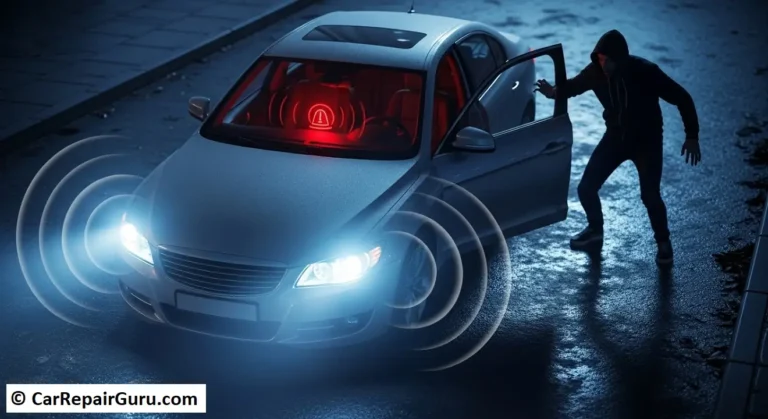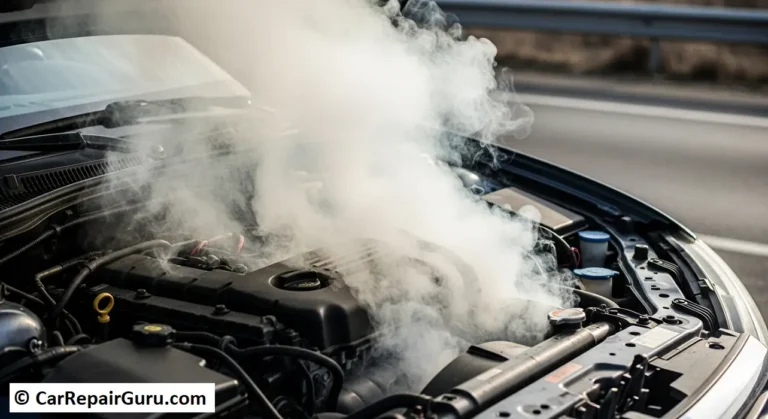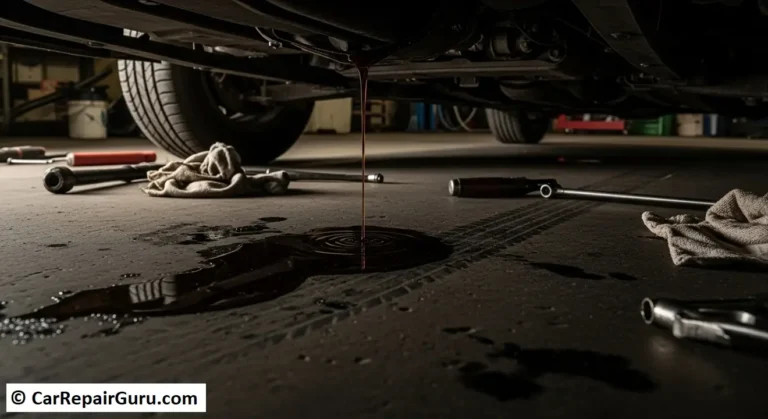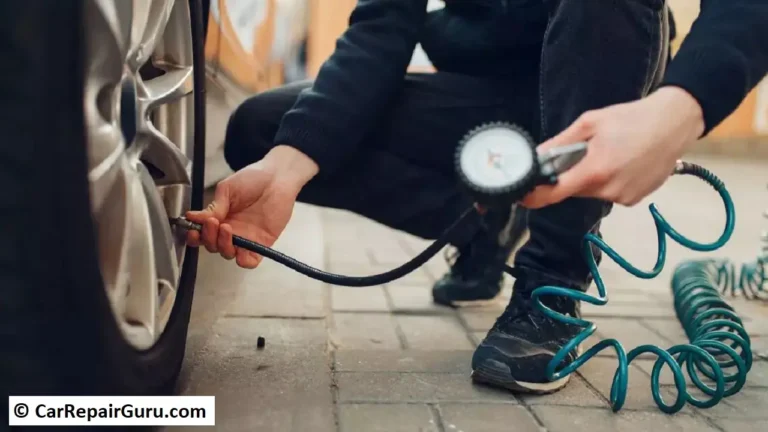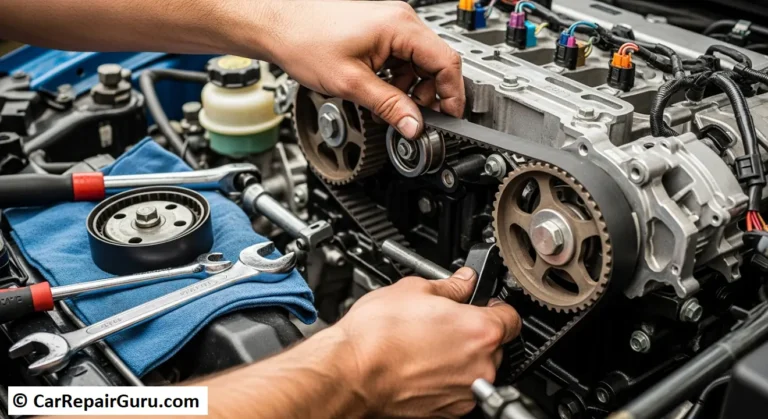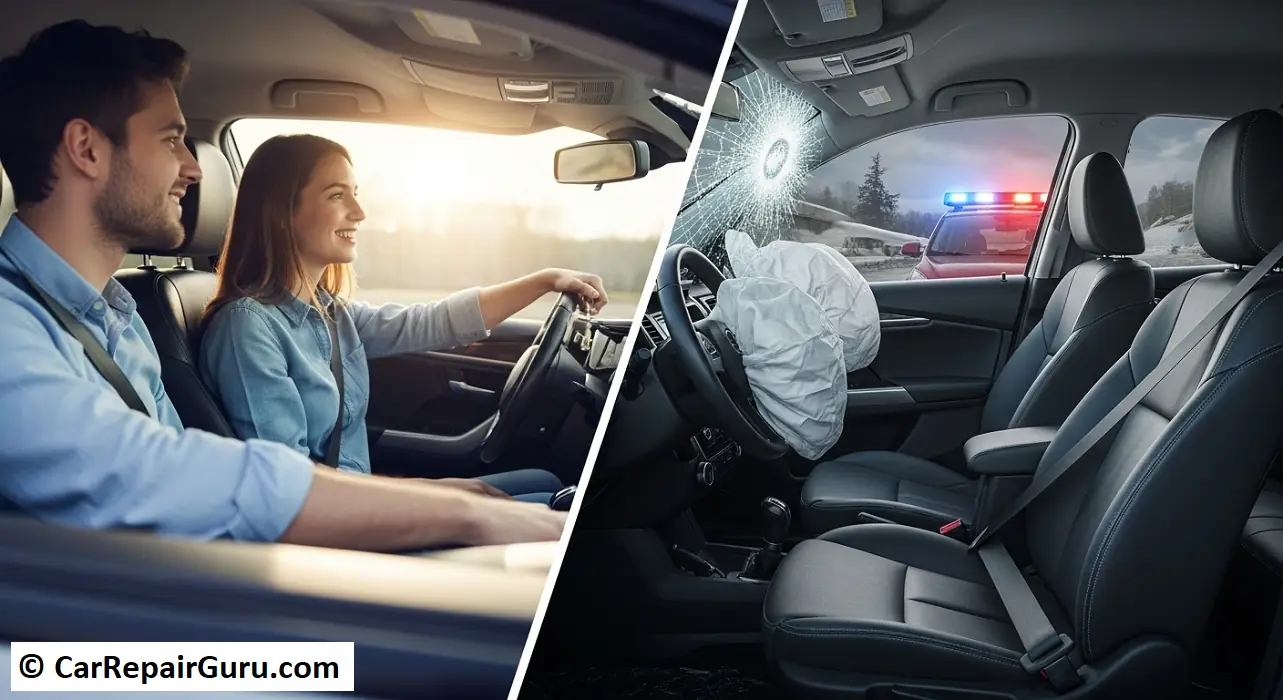
Every time you get into a car, one simple action can make the difference between life and death: buckling your seat belt. While modern vehicles have advanced safety features, the seat belt remains your first and most effective line of defense in a crash.
According to safety experts, seat belts reduce the risk of fatal injury by 45% in cars and 60% in light trucks. Beyond being a legal requirement, making seat belt use a non-negotiable habit is the single most important thing you can do to protect yourself on the road.
The Mechanics of Seat Belts: How They Work
At first glance, seat belts might seem like simple straps, but they are a sophisticated seat belt system engineered for maximum safety. Their primary function is to restrain passengers during a sudden stop or collision, managing the immense forces on the body and preventing occupants from being thrown forward.
A seat belt system consists of several key components:
- Webbing – The strong, flexible fabric strap designed to withstand extreme forces.
- Seat Belt Buckle – The latching mechanism that locks the belt securely in place.
- Retractor Mechanism – A spring-loaded spool that keeps the belt snug and locks it during a sudden deceleration.
- Seat Belt Pretensioners – An advanced feature that uses a small explosive charge to instantly tighten the belt in a crash, removing any slack.
- Load Limiters – A mechanism that allows the webbing to spool out slightly after the initial impact to prevent excessive pressure on the occupant’s chest.
When an accident occurs, these components work together in a fraction of a second to hold you firmly in your seat, dramatically improving survival rates when combined with other features like airbags.
Regular Inspection and Maintenance of Seat Belts
Just like any other car safety feature, seat belts require regular inspection and maintenance to ensure they function properly. Over time, webbing can wear out, retractors can weaken, and buckles can fail. Ignoring these issues can put you at serious risk.
How to Inspect Your Seat Belts
Perform a seat belt inspection at least every six months by checking for the following:
- Webbing condition – Look for any fraying, cuts, or discoloration. Damaged webbing is significantly weaker.
- Buckle function – The seat belt buckle should latch with a solid “click” and release smoothly. If it’s loose or difficult to operate, it needs attention.
- Retraction mechanism – Pull the seat belt all the way out and let it go. It should retract smoothly and completely without sticking.
- Seat belt pretensioners – If your vehicle has been in a crash, the pretensioners have likely deployed and the entire seat belt assembly must be replaced.
When to Seek Seat Belt Repair or Replacement
If your seat belt fails any of these tests, you need professional repair or replacement. It is critical to replace seat belts after any significant accident, as unseen damage can compromise their effectiveness.
Cleaning and Caring for Your Seat Belts
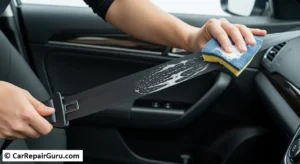
Regular cleaning is essential for seat belt care. Dirt and grime can degrade the webbing fibers over time, weakening the belt. Proper care keeps them looking fresh and extends their lifespan.
How to Clean Your Seat Belts Safely
- Pull the Seat Belt Out Fully – Extend the entire belt and use a clip or clamp near the retractor to keep it from pulling back in.
- Use a Mild Cleaner – Mix warm water with a small amount of gentle soap or use a dedicated interior fabric cleaner. Never use bleach or harsh chemicals, as they will damage the fibers.
- Scrub Gently – Use a soft-bristled brush or microfiber cloth to work the cleaner into the webbing.
- Wipe and Dry – Use a clean, damp cloth to remove any soap residue. Let the belt air dry completely before allowing it to retract. Applying heat can weaken the material.
Understanding Seat Belt Laws and Regulations
Wearing a seat belt isn’t just about safety—it’s also a legal requirement. Seat belt laws are designed to protect everyone on the road, and failure to comply can result in fines and points on your license.
Seat Belt Laws: What You Need to Know
- Primary Offense: In most places, not wearing a seat belt is a primary offense, meaning an officer can pull you over just for that.
- Driver and All Passengers: Laws typically mandate that the driver and all passengers, including those in the back seat, must be buckled up.
- Child Seat Belt Regulations: Children must be secured in an age- and size-appropriate restraint system, such as a car seat or booster seat.
- Penalties for Non-Compliance: Fines vary by location, but the real cost is the increased risk of injury in a crash.
Why Compliance Matters
Studies show that seat belt compliance reduces fatal injuries by nearly 50%. Beyond avoiding fines, wearing a seat belt ensures your safety and sets a good example for other passengers. Always check your local car seat belt regulations to stay informed and drive responsibly.
The Role of Seat Belts in Child Passenger Safety
When it comes to vehicle safety, children require special protection. Their smaller bodies are more vulnerable, and an adult seat belt can cause serious injury in a crash if used improperly.
Proper Seat Belt Use for Children
- Infants and Toddlers: Must ride in a rear-facing car seat for as long as possible to protect their developing neck and spine.
- Young Children: Should use a forward-facing car seat with a 5-point harness once they outgrow the rear-facing seat.
- Older Children: Must use a booster seat after outgrowing their car seat. This positions the adult lap and shoulder belt correctly across their body. The lap belt should sit on the thighs, not the stomach.
- When to Use an Adult Belt: A child is ready for an adult seat belt only when they can sit with their back against the seat, have their knees bend naturally over the edge, and the belt fits them properly.
Common Seat Belt Mistakes with Kids
- Using an adult seat belt too soon
- Placing the shoulder belt under the arm or behind the back
- Allowing children to ride without a booster seat before they meet height requirements
By following child seat belt safety guidelines, parents can drastically reduce the risk of serious injuries, ensuring every ride is as safe as possible for their young passengers.
Technological Advances in Seat Belt Systems
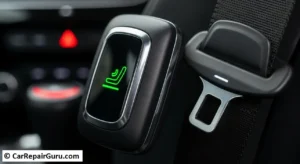
Modern seat belt systems have evolved far beyond simple straps, incorporating advanced technology to enhance passenger protection.
Key Innovations in Seat Belt Technology
- Pretensioners and Load Limiters – Now standard, these work together to secure the occupant and then manage chest forces.
- Inflatable Seat Belts – Found in some vehicles, these belts have a small airbag that deploys along the webbing to distribute crash forces over a wider area.
- Adaptive Seat Belts – These systems can adjust the belt’s force and tension based on the passenger’s size, weight, and seating position.
- Smart Seat Belt Reminders – Advanced sensors provide persistent audible and visual warnings if passengers in any seat are unbelted.
A Final Word on Safety
Your seat belt is the single most important safety device in your vehicle. Ensuring it is in perfect working order through regular inspection and care is a non-negotiable part of vehicle maintenance. It only works if you wear it correctly, every trip, every time.
Frequently Asked Questions
Why is it important to wear a seat belt?
Wearing a seat belt is the most effective way to reduce the risk of severe injury or death in a car crash. It keeps you secured in your seat and helps manage the massive forces of an impact.
How can I check if my seat belt is working properly?
Inspect the webbing for frays, check that the buckle latches securely, and ensure the belt retracts smoothly. If you notice any issues, it needs to be professionally inspected.
How often should I inspect my seat belts?
A quick visual inspection should be done every few months, with a more thorough check at least twice a year. Always replace seat belts after a collision.
Can seat belts be repaired if damaged?
No. For safety and liability reasons, damaged seat belt components are not repaired. The entire seat belt assembly must be replaced to guarantee it will perform correctly in a crash.
Are there different seat belts for children?
Yes. Children must use specific restraint systems like rear-facing car seats, forward-facing car seats, and booster seats until they are large enough for an adult seat belt to fit them correctly.
